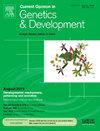比较转录组学的进化:生物尺度、系统发育跨度和建模框架
IF 3.6
2区 生物学
Q2 CELL BIOLOGY
引用次数: 0
摘要
比较转录组学研究是理解分子进化如何驱动整个生命之树的表型差异的关键。在这里,我们讨论比较转录组学领域正在发展的三个主要方向。第一个是由于测序技术的进步。大量RNA测序在20年前出现,作为表征转录组状态的关键工具,可以在组织和器官水平上进行进化比较。然而,单细胞和空间转录组学现在正在推动以细胞类型为中心的范式转变。其次,虽然比较转录组学研究历来集中在几个关键的模式生物和与人类密切相关的物种上,但最近的趋势已经转向更广泛的系统发育覆盖范围和在进化枝内更深入的采样。与此同时,越来越多的转录组学数据,以及机器学习方法的出现,正在导致新的建模框架的发展。这些框架的范围从细胞类型系统发育的重建到仅从基因组序列预测RNA覆盖范围,并推动了进化生物学及其生物医学应用的重大进展。本文章由计算机程序翻译,如有差异,请以英文原文为准。
Evolution of comparative transcriptomics: biological scales, phylogenetic spans, and modeling frameworks
Comparative transcriptomic studies are key to understanding how molecular evolution drives phenotypic divergence across the tree of life. Here, we discuss three major directions in which the field of comparative transcriptomics is evolving. The first one is enabled by advances in sequencing technologies. Bulk RNA sequencing emerged two decades ago as a key tool to characterize transcriptomic states, enabling evolutionary comparisons at the tissue and organ levels. However, single-cell and spatial transcriptomics are now driving a shift toward a paradigm centered around cell types. Second, while comparative transcriptomic studies have historically focused on a few key model organisms and on species closely related to humans, recent trends have shifted toward both broader phylogenetic coverage and deeper sampling within clades. In parallel, the growing amount of transcriptomic data, together with the advent of machine learning approaches, are leading to the development of new modeling frameworks. These frameworks range from reconstruction of cell type phylogenies to prediction of RNA coverage from genomic sequence alone and have propelled significant progress in evolutionary biology and its biomedical applications.
求助全文
通过发布文献求助,成功后即可免费获取论文全文。
去求助
来源期刊
CiteScore
7.90
自引率
0.00%
发文量
102
审稿时长
1 months
期刊介绍:
Current Opinion in Genetics and Development aims to stimulate scientifically grounded, interdisciplinary, multi-scale debate and exchange of ideas. It contains polished, concise and timely reviews and opinions, with particular emphasis on those articles published in the past two years. In addition to describing recent trends, the authors are encouraged to give their subjective opinion of the topics discussed.
In Current Opinion in Genetics and Development we help the reader by providing in a systematic manner:
1. The views of experts on current advances in their field in a clear and readable form.
2. Evaluations of the most interesting papers, annotated by experts, from the great wealth of original publications.[...]
The subject of Genetics and Development is divided into six themed sections, each of which is reviewed once a year:
• Cancer Genomics
• Genome Architecture and Expression
• Molecular and genetic basis of disease
• Developmental mechanisms, patterning and evolution
• Cell reprogramming, regeneration and repair
• Genetics of Human Origin / Evolutionary genetics (alternate years)

 求助内容:
求助内容: 应助结果提醒方式:
应助结果提醒方式:


